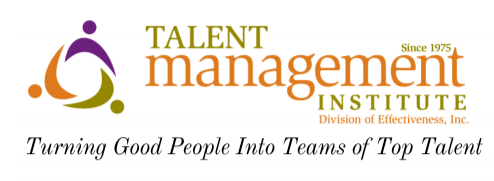The High Cost of Workplace Stress – Part I
from the Turning Good People Into Top Talent blog series
by Bob Moore, CMC
Stress: We’ve All Felt It
Sometimes stress can be a positive force, motivating you to perform well at your job. But often — like when you’re stuck in traffic — it’s a negative force. If you experience stress over a prolonged period of time, it could become chronic — unless you take action.

For years, organizations and researchers have explored the effects of stress in the workplace. According to the U.S. Centers for Disease Control (CDC), now more than ever before, job stress poses a threat to the health of workers and, in turn, to the health of organizations. Consider the following statistics:
- One-fourth of employees view their jobs as the number one stressor in their lives (CDC).
- 40% of workers claim their job is very or extremely stressful (NML).
The American Psychological Association, Stress in America Report 2012, revealed the following:
- Forty-three percent of American adults report that stress has caused them to lie awake at night in the past month.
- Forty-two percent of adults report that their stress level has increased, and 36 percent say their stress level has stayed the same over the past five years.
- Sixty-one percent of adults say that managing stress is extremely or very important, but only 35 percent say they are doing an excellent or very good job at it.
- Forty-four percent of adults say they are not doing enough or are not sure whether they are doing enough to manage their stress, but 19 percent say they never engage in stress management activities.
- Money (71 percent), work (69 percent) and the economy (59 percent) continue to be the most commonly reported sources of stress.
Stress: A Natural Reaction
All of us have found ourselves with sweaty hands or felt our heart pounding during a scary or risky situation. This is an automatic response developed in our ancient ancestors as a way to protect them from predators and other threats. Whenever we are faced with danger, real or imagined, our body kicks into gear, flooding our system with hormones that elevate our heart rate, increase our blood pressure, boost our energy and prepare us to deal with the problem.
However, these days, none of us is likely to face the risk of being eaten by a tiger in the course of a normal day. But you probably do confront multiple challenges every day, such as meeting deadlines, paying bills and juggling a hectic schedule that make your body react the same way. As a result, your body’s natural alarm system — the “fight or flight” response — may be stuck in the ON position. And that can have serious consequences for your health.
Workplace Stress
A high-demand job coupled with low decision-making latitude is associated with increased risk of coronary disease.
When stress begins to interfere with your ability to live a normal life for an extended period, it becomes even more dangerous. Prolonged, chronic stress may also cause disease from overeating, smoking and other bad habits used as coping mechanisms.
Solution to Workplace Stress
In the next issue coming Thursday, discover the solution to The High Cost of Workplace Stress and a special offer for the new Workplace Stress Assessment.
Bob
Bob Moore, CMC®
CEO of Effectiveness, Inc. and
The Talent Management Institute
“Turning Good People Into Top Talent”
www.talentmanagementinstitute.com
Bob@effectiveness.com
919-439-5811
